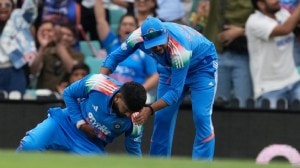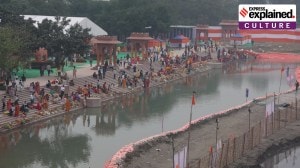Monsoon mayhem on highway of horror
Until the monsoon arrived, this 18.35-km stretch of asphalt was just another arterial link for a city of commuters battling...

Until the monsoon arrived, this 18.35-km stretch of asphalt was just another arterial link for a city of commuters battling traffic pile-ups to get to work in central and south Mumbai from distant suburban homes. Suddenly, the Eastern Express Highway — used by an estimated 50,000 passenger cars daily — is not a safe route anymore, having accounted for over 200 accidents, minor as well as significant, since June 1. As many as 73 casualties have been recorded on this stretch during the same period — at an inconceivable rate of 3.04 per day.
For motorists, who thought the financial capital’s “lifeline” railway that claims an average 10 lives a day is an unsafe bet, driving to work is suddenly a hazardous proposition too.
Linking Sion in central Mumbai to Thane on the fringes of the financial capital and beyond, the Eastern Express Highway is one of the several key roads widened and “improved” under the Mumbai Urban Infrastructure Project, by firms contracted by the Mumbai Metropolitan Region Development Authority (MMRDA). With the MMRDA having spent Rs 125 crore in 2007 on asphalting the Eastern Express Highway and tens of crores in 2008 as well, it’s no surprise that the spate of accidents has led to the game of passing the buck.
The traffic police blame the slippery surface, with several officers stating that the surface material — mastic asphalt, used to drain rainwater — is the culprit. “The condition of the highway is such that vehicles are prone to slipping when it rains. However, the MMRDA won’t admit this, choosing to shift the blame on rash drivers,” said a Traffic police officer.
According to Joint Commissioner of Police (Traffic) Sanjay Barve, lubrication liquid that drips from vehicles mixes with dust on the highway. “During monsoon, when the roads are wet, this lubricant mixes with water, leading to accidents resulting from vehicles slipping,” he said, adding, “drivers should take care at such times”.
However, the latest accident, on an early Sunday morning, occurred during a long dry spell. As a tempo carrying 20 fishermen skidded, a private bus coming form the opposite direction collided with it, head on. Three fishermen died, nine others were injured in the 20th major accident here in June.
The MMRDA, of course, says the drivers are to blame. “Accidents caused on the highways are due to over-speeding,” said Metropolitan Commissioner Ratnakar Gaikwad. “When motorists at high speed apply the brakes suddenly, they are bound to skid on any surface, not just mastic asphalt,” he added.
Agrees DCP Shivaji Solunkhe (Traffic): “Even though the streets are wet, it is the responsibility of the driver not to speed beyond the limits. All accidents cannot be blamed on the wet conditions.”
Meanwhile, in a complaint filed at the Vikhroli magistrate’s court, former MP Kirit Somaiya of the BJP pointed to the worrying number of accidents on the highway, alleging that the cause was faulty construction and improper technology. The magistrate ordered the Vikhroli police to submit a report on July 24.
Mulund-based Abhishek Bondre (26), an employee with a private company at Powai and a regular biker on the Eastern Express Highway, said there was more to the remedy than the asphalt. Apart from lack of policing, he said the streetlights were located at some distance from one another, especially along the Vikhroli portion, “So, there are patches of darkness at night,” he said.
Civil engineer and transportation expert Sudhir Badami agreed that blaming asphalt is simplistic: “To give motorists pothole-free roads, the MMRDA used mastic asphalt on the entire stretch,” he said, adding that modern cars with better pick-up, plus speeding motorists, were equally to blame.
Gaikwad says the “issue” is being looked into and the MMRDA is installing signage at the chronic accident spots.
But daily motorists along the highway are wondering what else could soon become perilous in Mumbai.



- 01
- 02
- 03
- 04
- 05




























